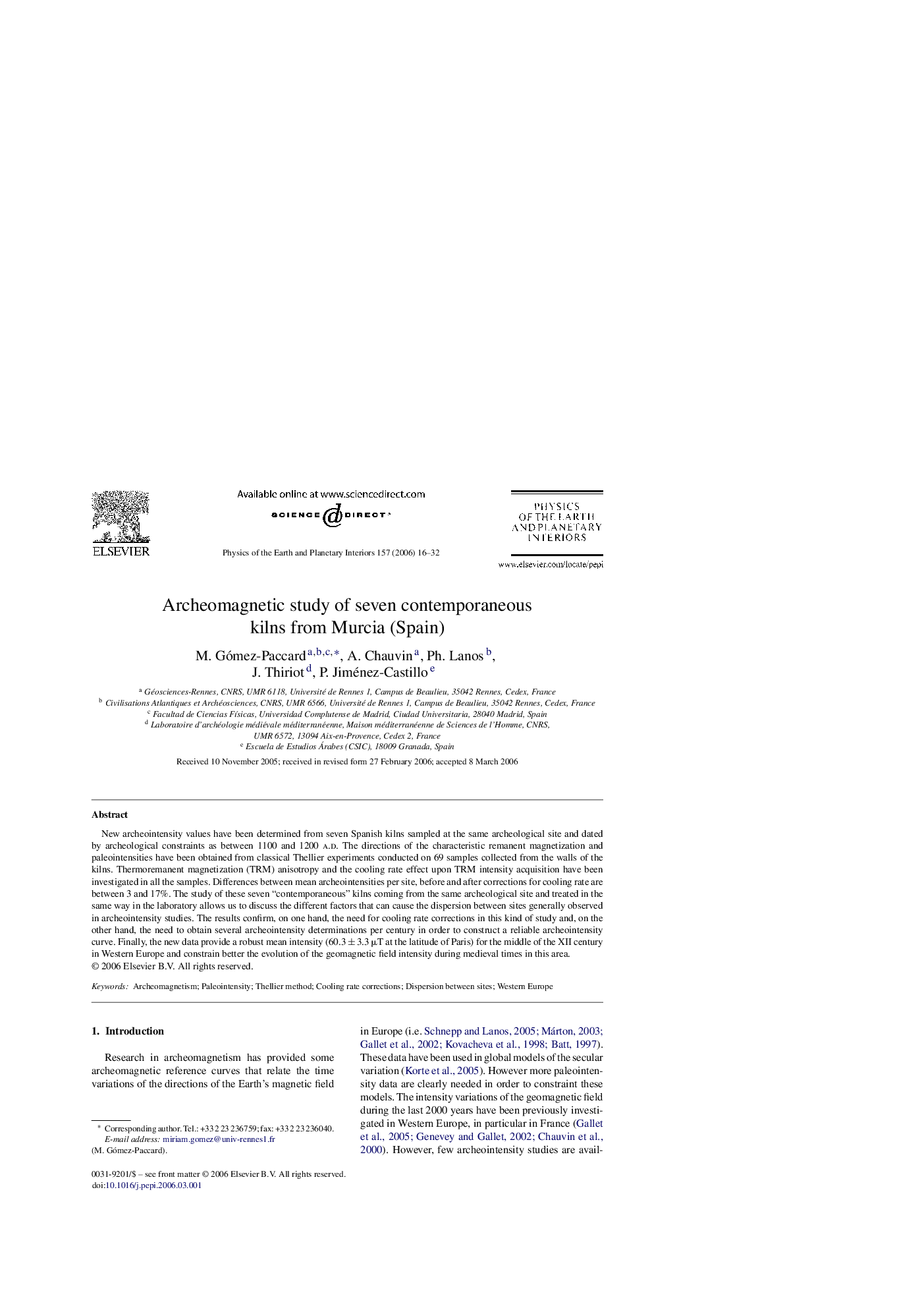| Article ID | Journal | Published Year | Pages | File Type |
|---|---|---|---|---|
| 4742668 | Physics of the Earth and Planetary Interiors | 2006 | 17 Pages |
New archeointensity values have been determined from seven Spanish kilns sampled at the same archeological site and dated by archeological constraints as between 1100 and 1200 a.d. The directions of the characteristic remanent magnetization and paleointensities have been obtained from classical Thellier experiments conducted on 69 samples collected from the walls of the kilns. Thermoremanent magnetization (TRM) anisotropy and the cooling rate effect upon TRM intensity acquisition have been investigated in all the samples. Differences between mean archeointensities per site, before and after corrections for cooling rate are between 3 and 17%. The study of these seven “contemporaneous” kilns coming from the same archeological site and treated in the same way in the laboratory allows us to discuss the different factors that can cause the dispersion between sites generally observed in archeointensity studies. The results confirm, on one hand, the need for cooling rate corrections in this kind of study and, on the other hand, the need to obtain several archeointensity determinations per century in order to construct a reliable archeointensity curve. Finally, the new data provide a robust mean intensity (60.3 ± 3.3 μT at the latitude of Paris) for the middle of the XII century in Western Europe and constrain better the evolution of the geomagnetic field intensity during medieval times in this area.
